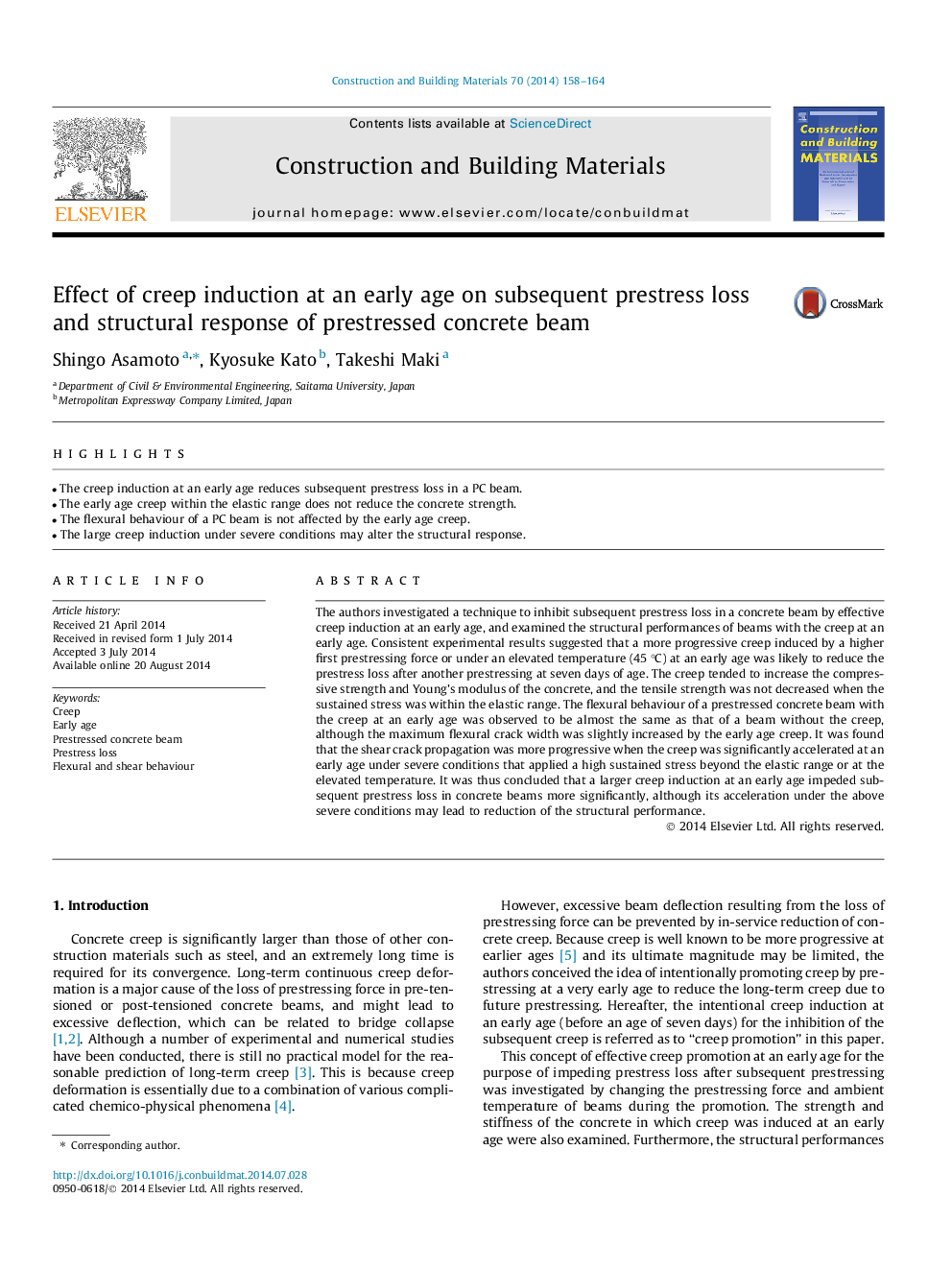| Article ID | Journal | Published Year | Pages | File Type |
|---|---|---|---|---|
| 257349 | Construction and Building Materials | 2014 | 7 Pages |
•The creep induction at an early age reduces subsequent prestress loss in a PC beam.•The early age creep within the elastic range does not reduce the concrete strength.•The flexural behaviour of a PC beam is not affected by the early age creep.•The large creep induction under severe conditions may alter the structural response.
The authors investigated a technique to inhibit subsequent prestress loss in a concrete beam by effective creep induction at an early age, and examined the structural performances of beams with the creep at an early age. Consistent experimental results suggested that a more progressive creep induced by a higher first prestressing force or under an elevated temperature (45 °C) at an early age was likely to reduce the prestress loss after another prestressing at seven days of age. The creep tended to increase the compressive strength and Young’s modulus of the concrete, and the tensile strength was not decreased when the sustained stress was within the elastic range. The flexural behaviour of a prestressed concrete beam with the creep at an early age was observed to be almost the same as that of a beam without the creep, although the maximum flexural crack width was slightly increased by the early age creep. It was found that the shear crack propagation was more progressive when the creep was significantly accelerated at an early age under severe conditions that applied a high sustained stress beyond the elastic range or at the elevated temperature. It was thus concluded that a larger creep induction at an early age impeded subsequent prestress loss in concrete beams more significantly, although its acceleration under the above severe conditions may lead to reduction of the structural performance.
